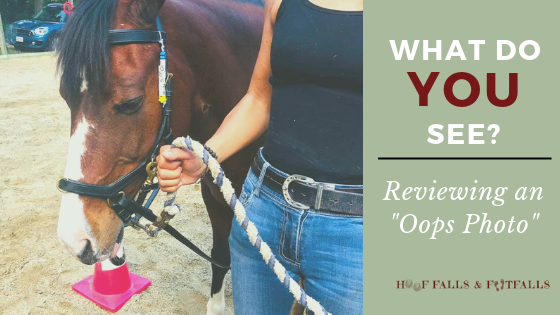What do YOU see in this "Oops Photo"?
The Oops Photo in this post was a replication of things that Instructors commonly see in class.
Thank you to Monica Wu MS OTR/L, HPCS and PATH Intl. Registered TRI from Horse & Therapy Connections and REINBOW Therapy, LLC for recreating this photo for learning purposes! This photo was staged to show many different ‘oops’ things we may see in class.
Let’s break down this photo and talk about some takeaway points when it comes to managing volunteers and equipment in our adaptive riding lessons.
Read all the way to the bottom for a SIMPLE SOLUTION to the major issue seen in this photo.
So what do you think the ‘major issue’ is? Have you spotted it yet?
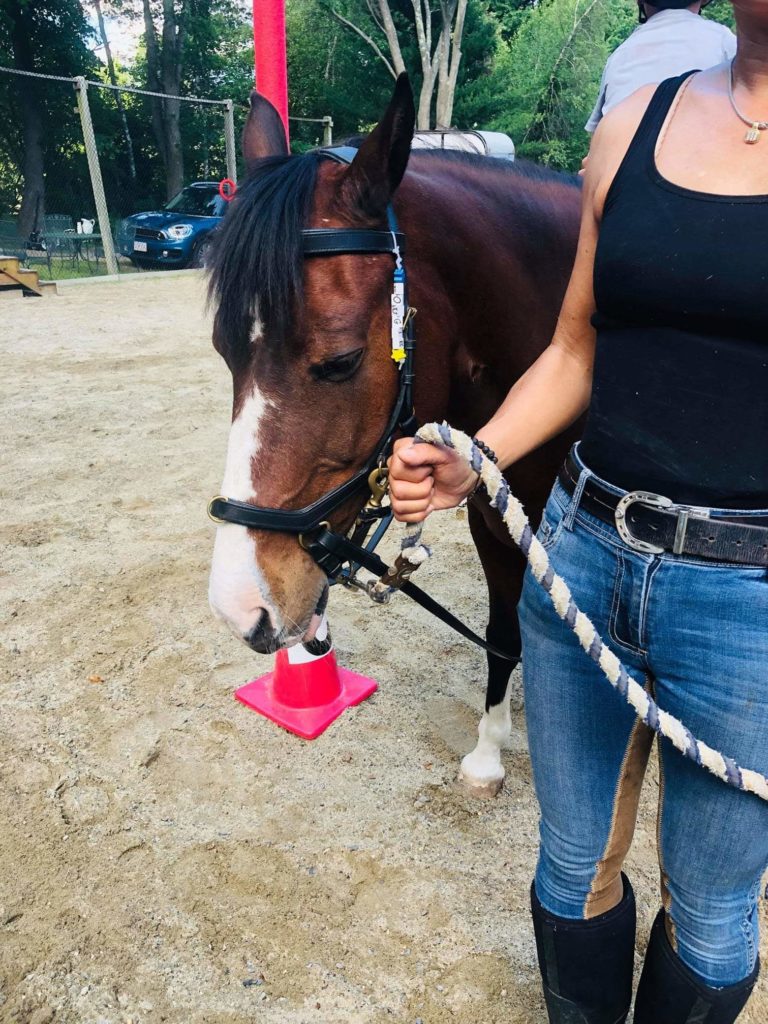
The Major Takeaway

The Short Lead Rope
Why is this the MAJOR takeaway? Here are a few points (you can watch the video explanation HERE). Remember to read to the bottom for a simple solution to the points mentioned below.
- Not respecting the horse’s space– The horses that we work with in adaptive riding programs (or programs that offer PT, OT, and SLP and incorporate equines) have many additional ‘touch’ factors in their lives than more traditional lessons horses. We ask our horses to stay out of our space….but are we doing the same for them? Constantly being in the horse’s space can create frustration and negative behaviors that are often seen as “Naughty” but they are just trying to communicate.
Is your horse truly being “naughty” or is he trying to tell you something? Read more about “naughty” horses in Part 1 and Part 2 of “Naughty Horses”
- Impacting the quality and amount of movement given from horse to rider– When a horse is led on a short rope they are limited on how much they can move their head. As a horse walks, they naturally move their head and neck. This movement from the head and neck flows through the rest of the horse’s body and eventually into their rider. If we limit the movement of the horse (often unintentionally) by having a short lead then we are also limiting and degrading the quality and amount of movement the rider get’s from the horse. Movement, and quality movement, is a BIG part of adaptive riding and other mounted equine activities or therapies.
- Impacting the symmetry and balance of the horse– When a horse has constant (usually unintentional) pressure applied by the lead rope on one side (often the left) this can cause them to track asymmetrical. The pressure on the left usually causes the horse to bend their head and neck to the left and track shifted to the left instead of straight. I would guess that most of your lesson horses are stiffer going to the right than to the left….often because of how one sided we make them while leading!
Other Important Takeaways
Spacing between humans, horses, and obstacles.
Do you see the spacing between the horse’s hoof and the red cone?
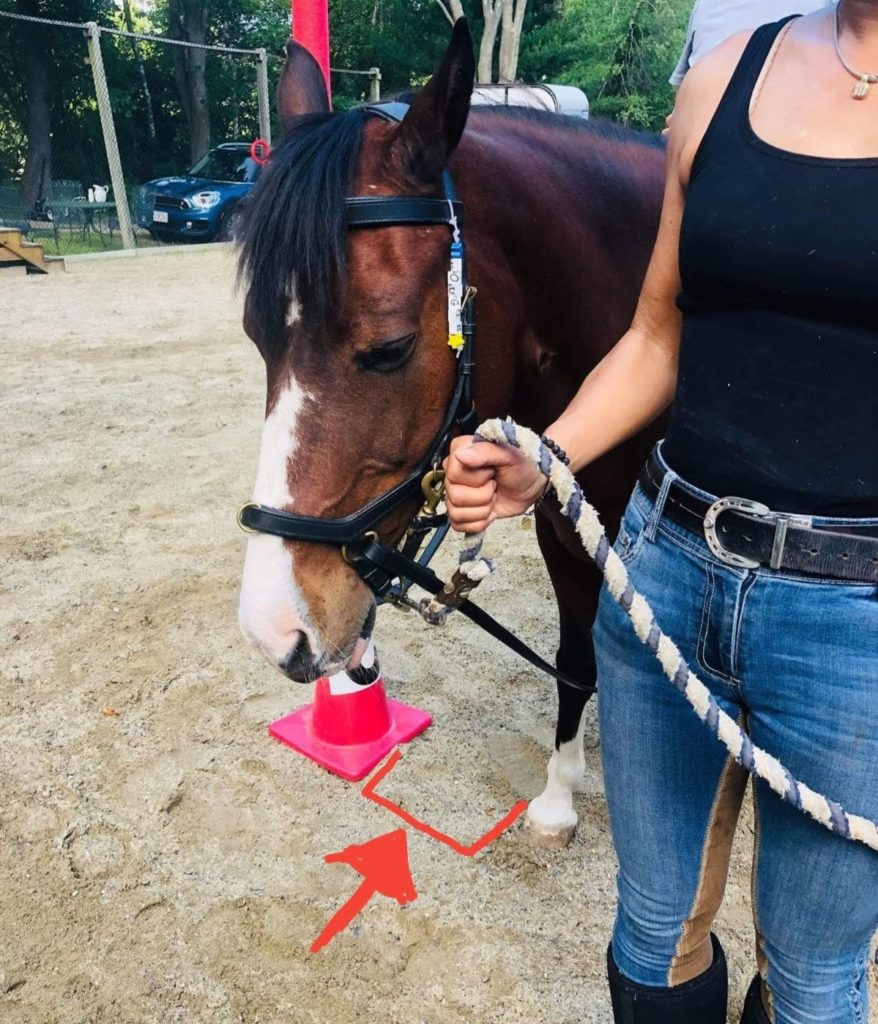
Hanging rein.
Do you see the black rein hanging down?
With smaller horses like this one, try setting the center of the reins as far back as you can by the pommel of the saddle- of course without hooking them over anything.
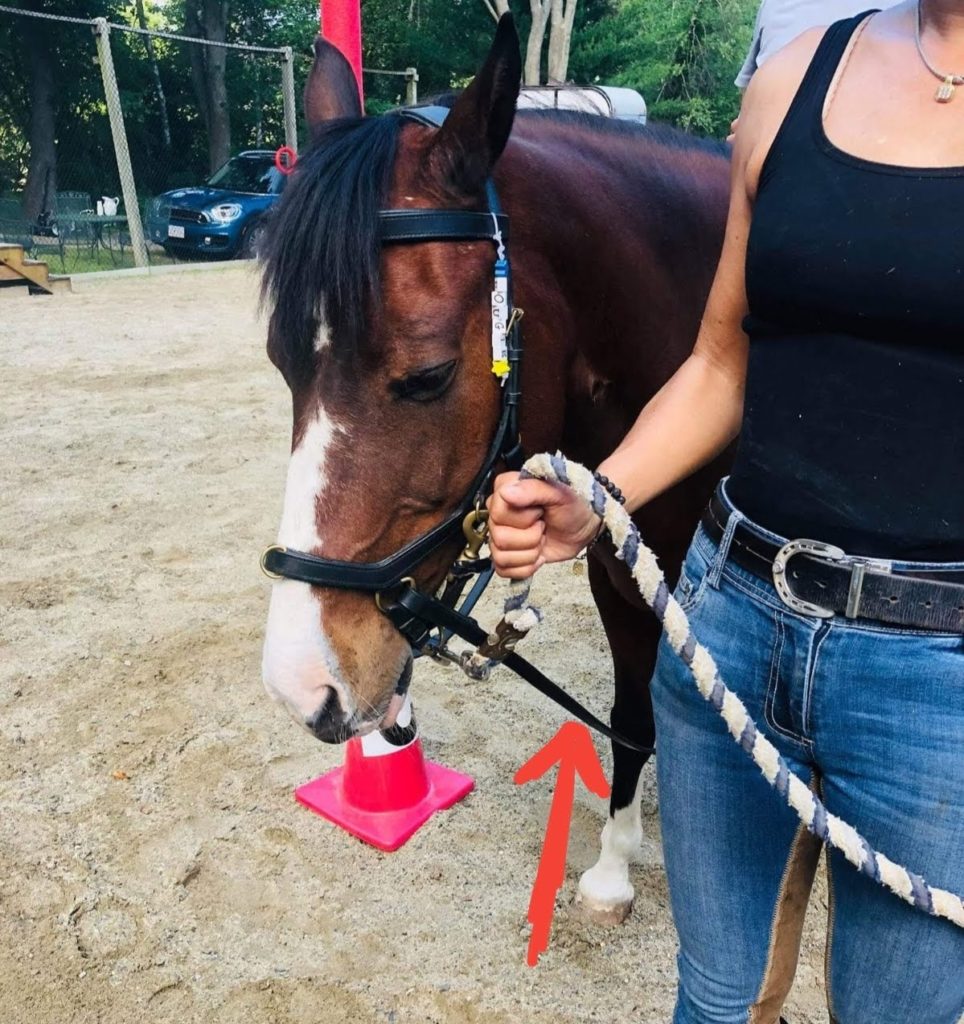
Have you seen any of the three ‘oops’ items mentioned above in your classes? Leave a comment below to let us know!
A SIMPLE SOLUTION for the MAJOR Takeaway
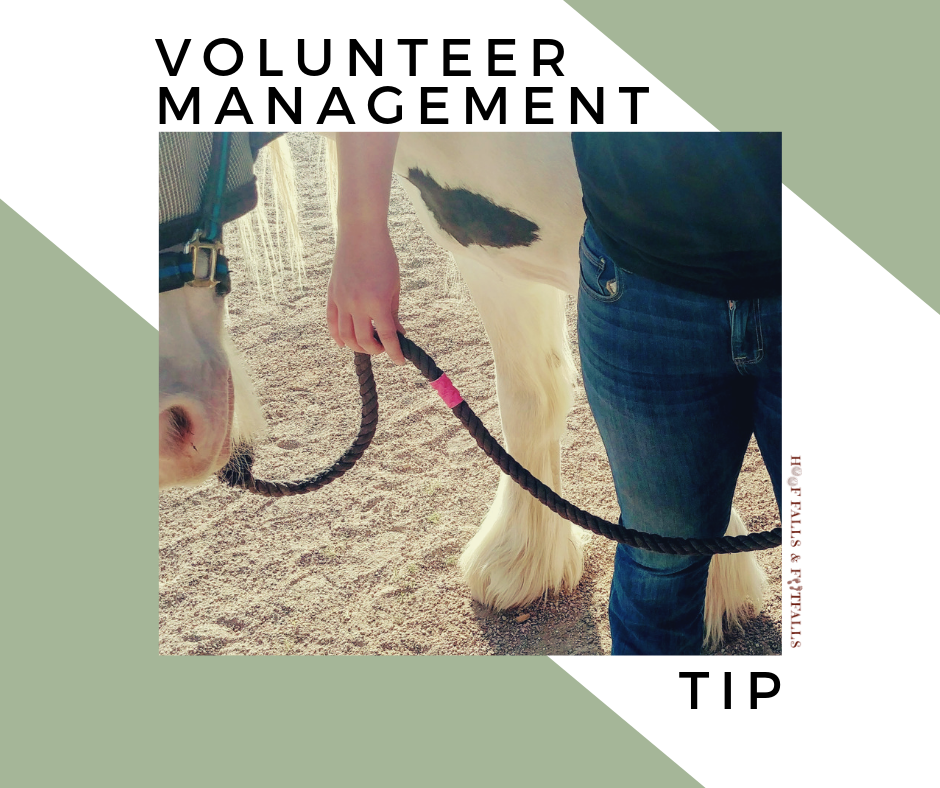
Volunteer Management Tip!
Do you notice your Horse Leaders’ hands getting closer and closer to the snap of the lead rope?
A quick, budget friendly fix is to give them a visual marker for where you want their hand to be (we do visuals for our students…we should also do them for volunteers!).
Use a piece of duct tape or electrical tape to mark where you want the hand of your horse leader to go (usually about 12 to 18 inches away from the snap).
You can even incorporate it into the volunteer training and teach everyone that if someone calls out “Tape Check” they should check their hand placement on the lead.
Watch a replay of the discussion on this "Oops Photo"


